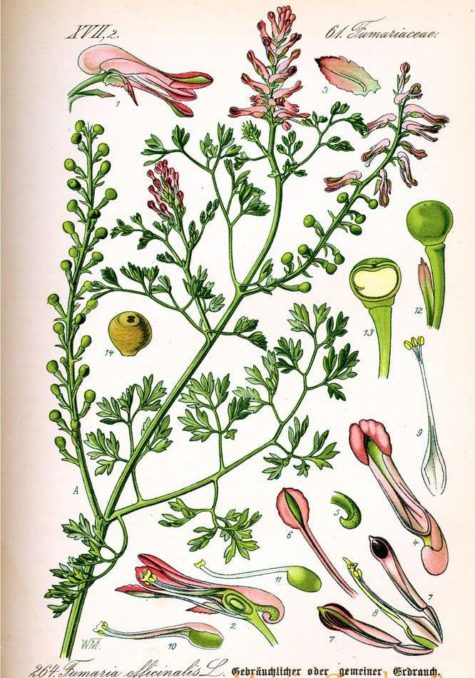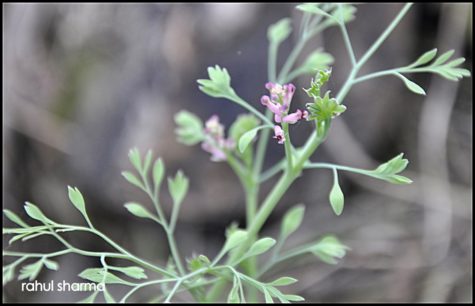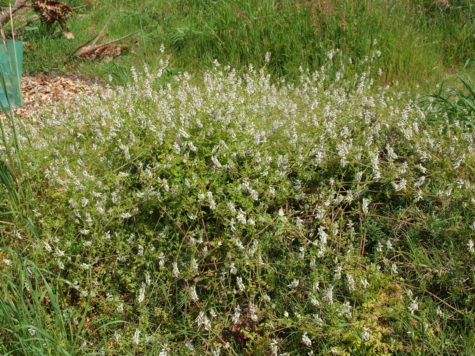Aperient
Celery
- Scientific Name: Apium graveolens var. dulce
- Plant Family: Umbelliferae
- Parts Used: Leaves, Stalks, Seeds, Roots
- Actions: Digestive, Stimulant, Diuretic, Anti-rheumatic, Carminative, Sedative, Aromatic
This is the cultivated celery, introduced into Britain in the late 17th century from Italy, replacing as a potherb the acrid little wild celery, known as “smallage,” that grows in salt marshes and river estuaries in Britain and Europe.
Some people use celery on the skin to repel mosquitoes. Some people also take celery by mouth for conditions such as menstrual cramps, prediabetes. Unblanched celery is rich in vitamins and mineral salts. It is a digestive and stimulant with a reputation for lowering blood pressure.
Celery seeds find their main use in the treatment of rheumatism, arthritis, and gout. They are especially useful in rheumatoid arthritis where there is an associated mental depression. Their diuretic action is obviously involved in rheumatic conditions, but they are also used as a urinary antiseptic, largely because of the volatile oil apiol.
Appearance
The leaves are smooth, shining, yellow-green and feathery, and the fleshy ridged stem is a bright green unless blanched pale. It is a biennial, umbels of white flowers appearing in late summer during the second year, followed by dark, ridged seeds.
Habitat and Cultivation
Celery thrives in cool, mild climates and requires high levels of moisture. Growing to a height of 15-24 inches, celery has long, fibrous petioles formed by conically arranged stalks joined at the base that surround the heart of the celery plant. The stalks each produce three to five bright green, pinnate leaves at the tip of the stalk.
Celery’s small white or yellow flowers appear in umbels from January to August during the plant’s second year of growth. The celery fruits, or schizocarps, consist of two united carpels (mericarps), each containing a brown, ridged, ovoid-shaped, very small seed, approximately 1.3 mm in length. These fruits, known in commerce as “celery seed,” have a floral odor and slightly pungent taste, and typically ripen in August and September.
Celery is cultivated worldwide. Celery’s Latin binomial, Apium graveolens, translates to “strongly smelling” and alludes to celery’s aromatic compounds.
Cultivated celery has been bred for its elongated, thick, fleshy, ribbed, milder-tasting stalks, while wild celery is grown for its bitter leaves. By the early 19th century, four varieties of celery were cultivated in the United States, where the plant gained popularity as a salad vegetable.
Three varieties of celery are the most commonly cultivated:
- Chinese celery (var. secalinum), which is used sparingly as a condiment due to its strong, bitter taste.
- Stalk celery (var. dulce), which is eaten raw in salads or cooked.
- Celeriac or “turnip-rooted celery” (var. rapaceum), which is grown for its enlarged root. Celeriac is popular in European cuisine and its seeds also are used for making commercial celery salt.
Medicinal Uses
Cooling thermal nature; sweet and bitter flavor, Celery benefits the stomach and spleen-pancreas and calms an aggravated liver. It improves digestion, dries damp excesses, purifies the blood, reduces wind conditions such as vertigo and nervousness, and promotes sweating.
Also used for heat excesses such as eye inflammations, burning urine, blood in the urine, acne, and canker sores. It will cool internal heat in the liver and stomach, which often contributes to headaches and excessive appetite, among other maladies.
For appetite control, raw celery can be eaten between and during meals. To slow down and encourage more thorough chewing of food, eat celery with a meal.
Celery is one of the few vegetables that combines well with fruit, as it has an ability to dry damp conditions, including those associated with eating fruit and concentrated sweeteners.
Celery juice combined with a little lemon juice is a remedy for the common cold when fever is more prominent than chills. The combination is helpful in headaches caused by high blood pressure or by heat conditions (red face, head feels hot, red tongue, and/or irritability).
Celery juice alone or in combination with lemon is useful for diabetes and helps clear the acidosis commonly caused by diabetes. For this purpose, drink 2 to 4 cups of the juice daily.
Very high in silicon, celery helps renew joints, bones, arteries, and all connective tissues. Because of these effects and the capacity of celery to clear digestive fermentation (dampness) and acidic blood that frequently accompany tissue inflammations, it is useful in the treatment of rheumatism, arthritis, gout, and nerve inflammations.
Both the stalks and roots are used in the East and West to treat high blood pressure and are a safe remedy for high blood pressure during pregnancy.
It is thought that the chemicals in celery can have many effects on the human body, including lowering blood pressure and blood sugar and causing sleepiness, but there is limited research to support these proposed effects. Chemicals in celery seem to reduce the ability of bacteria to cause urinary tract infections (UTIs).
Celery seeds, leaves, stem, and root are used in a variety of traditional medicine systems, including the Unani tradition of ancient Persia and Arabia, Indian Ayurveda, and Chinese herbal medicine. As an herbal preparation, celery seeds were consumed fresh or as a water decoction, or the seed powder or extracts were used. Continue reading
Fumitory
- Scientific name: Fumaria officinalis
- Family: Fumariaceae
- Medical Action: Laxative, alterative, cholagogue, hepatic, diuretic, and aperient, a weak tonic, slightly diaphoretic,
- Constituents: Alkaloids, bitter principle, mucilage, fumaric acid, amino acids, resin. The plant contains isoquinoline alkaloids protopine and allocryptopine.
- Parts Used: Leaves
- Other Fumitories: American Fumitory Fumaria Indica, or Codder Indian
The Basics
Earth smoke, as it is also called, is a wild poppy plant traditionally used as an incense herb with a stimulating effect on liver and gallbladder and as a protection against skin diseases and eczema. The drug fumitory is toxic in high doses.
Fumitory has been known since antiquity and was described in herbals from the Middle Ages. Fumitory is a predominantly Mediterranean genus that once was used medicinally. Traditional preparation involved expressing the juice and evaporating it. It has been used as a laxative and diuretic.
Fumaria species are used in Turkish folk medicine as a blood purifier and an anti-allergic agent.
In traditional medicine, the plant has been used to treat eczema and other dermatologic conditions. It was thought to be good for the eyes, and to remove skin blemishes. In modern times herbalists use it to treat skin diseases, and conjunctivitis; as well as to cleanse the kidneys.
Fumitory has a long history of use in the treatment of skin problems such as eczema and acne. Its action is probably due to a general cleansing mediated via the kidneys and liver. Fumitory may also be used as an eyewash to ease conjunctivitis.
The name is said to be derived either from the fact that its whitish, blue-green colour gives it the appearance of smoke rising from the ground, or, according to Pliny, because the juice of the plant brings on such a flow of tears that the sight becomes dim as with smoke, and hence its reputed use in affections of the eye.
Constituents
The leaves yield by expression a juice which has medicinal properties. An extract, prepared by evaporating the expressed juice, or a decoction of the leaves, throws out upon its surface a copious saline efflorescence. Fumaric acid was early identified as present, and its isomerism with maleic acid was established later.
The alkaloid Fumarine has been believed to be identical with corydaline, but it differs both in formula and in its reaction to sulphuric and nitric acids. It occurs in colourless, tasteless crystals, freely soluble in chloroform, less so in benzine, still less so in alcohol and ether, sparingly soluble in water.
Etymology
The “smoky” or “fumy” origin of its name comes from the translucent color of its flowers, giving them the appearance of smoke or of hanging in smoke, and the slightly gray-blue haze color of its foliage, also resembling smoke coming from the ground, especially after morning dew.
The plant was already called fūmus terrae (smoke of the earth) in the early 13th century, and two thousand years ago, Dioscorides wrote in De Materia Medica and Pliny the Elder in Naturalis Historia that rubbing the eyes with the sap or latex of the plant causes tears, like acrid smoke (fūmus) does to the eyes. Continue reading
Rennie Luttrull: queen-annes-lace-seeds
Rosanna: Spignel aka Bald Money
Annamarie Squatrito: Fumitory
EILEEN Klinghagen: Pumpkin
Mahmudul Hasan: Celery







